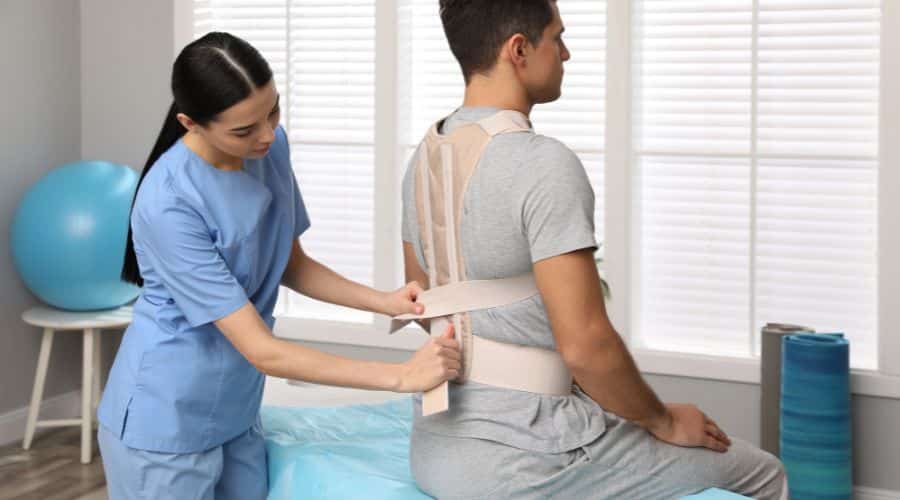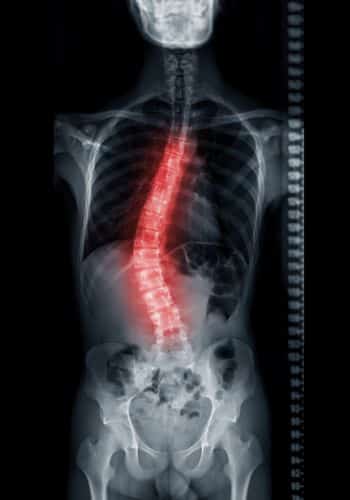How To ease your scoliosis pain
Scoliosis is a lateral curvature of the spine. There may be one curve (“C” curve) present or two curves (“S” curve). Scoliosis is technically defined as a lateral curve of the spine greater than 10 degrees. Ten to 20 degrees of curvature is called mild scoliosis, 20-40 degrees is a moderate scoliosis, and greater than 40 degrees of curvature is a severe scoliosis.
It’s Time to Say “No More!” To Scoliosis pain
How can be affected by Scoliosis
Approximately 2-3 million people have scoliosis and there is no cure for the problem.
In most cases (approximately 80%), the scoliosis is idiopathic in nature meaning there is no apparent cause.
It affects all age groups and males as often as females.
Infantile scoliosis affects children at birth.
Juvenile scoliosis affect children between age 4 and puberty, adolescent scoliosis affects kids from puberty to adulthood, and there is also a classification of adult onset scoliosis.
Female scoliosis patients are more likely to experience a progression of the disease.
Symptoms may include:
- pain and fatigue
- in severe cases difficulty with breathing,
- digestion, and
- walking.
Request A Call Back from a Physical Therapist
If you’re not quite ready to book an appointment yet and have some questions you would like answered first, click the link below to complete a form to get the conversation started.


What are the possible treatment goals for scoliosis?
Treatment typically consists of bracing for moderate curves and surgery for severe curves.
Although there is little medical literature to prove the effectiveness of exercise for correction/improvement of a scoliosis curve, physical therapists are your best choice if you are looking for a customized exercise program for your scoliosis.
Recommended exercises can decrease pain, stretch tight muscles, and strengthen the core spine/abdominal muscles.
Possible Treatment Goal
- Improve Fitness
- Improve Function
- Optimize Joint Alignment
- Improve Muscle Strength and Power
- Improve Proprioception
- Improve Range of Motion
- Improve Relaxation
- Self-care of Symptoms
- Improve Safety
- Improve Tolerance for Prolonged Activities
Common Symptoms Of Scoliosis?
Most often, there are no symptoms.
If there are symptoms, they may include:
- Backache or low-back pain that goes down the legs
- Weakness or tired feeling in the spine after sitting or standing for a long time
- Uneven hips or shoulders (one shoulder may be higher than the other)
- Shoulder pain
- Spine curves more to one side
Exams and tests for Scoliosis?
The health care provider will perform a physical exam. You will be asked to bend forward. This makes your spine easier to see. It may be hard to see changes in the early stages of scoliosis.
The exam may show:
- One shoulder is higher than the other
- The pelvis is tilted
X-rays of the spine are done. X-rays are important because the actual curving of the spine may be worse than what your doctor can see during an exam.
Other tests may include:
- Spinal curve measurement (scoliometer screening)
- X-rays of the spine to see how flexible the curvature is
- MRI of the spine
- CT scan of the spine to look at the bony changes
Request A Free Discovery Visit
Are you unsure if physical therapy is right for you? Take advantage of our FREE discovery visits which help identify your issues and if we can provide help!
** Please note there is no treatment given during one of our discovery visits. These visits are designed to evaluate your needs and ensure we can offer the help you need.
What Treatment can be given for Scoliosis?
Treatment depends on many things:
- The cause of scoliosis
- Where the curve is in your spine
- How big the curve is
- If your body is still growing
Most people with idiopathic scoliosis do not need treatment.
But you should still be checked by a doctor about every 6 months.
If you are still growing, your doctor might recommend a back brace. A back brace prevents further curving.
There are many different types of braces.
What kind you get depends on the size and location of your curve. Your provider will pick the best one for you and show you how to use it. Back braces can be adjusted as you grow.
Back braces work best in people over age 10. Braces do not work for those with congenital or neuromuscular scoliosis.
You may need surgery if the spine curve is severe or getting worse very quickly.
Surgery involves correcting the curve as much as possible:
- Surgery is done with a cut through the back, belly area, or beneath the ribs.
- The spine bones are held in place with 1 or 2 metal rods. The rods are held down with hooks and screws until the bone heals together.
- After surgery, you may need to wear a brace for a while to keep the spine still.
Scoliosis treatment may also include:
- Emotional support: Some children, especially teens, may be self-conscious when using a back brace.
- Physical therapy and other specialists to help explain the treatments and make sure the brace fits correctly.
Need To Know More About Cost and Availability?
If you’d like to find out more information about the cost and availability of our services click the button below to complete a short form, a member our team will then reach out.
the outlook/prognosis for scoliosis?
How well a person with scoliosis does depends on the type, cause, and severity of the curve.
The more severe the curving, the more likely it will get worse after the child stops growing.
People with mild scoliosis do well with braces. They usually do not have long-term problems. Back pain may be more likely when the person gets older.
Outlook for those with neuromuscular or congenital scoliosis varies.
They may have another serious disorder, such as cerebral palsy or muscular dystrophy, so their goals are much different.
Often, the goal of surgery is simply to allow a child to be able to sit upright in a wheelchair.
Congenital scoliosis is difficult to treat and usually requires many surgeries.
Possible Complications of Scoliosis?
Complications of scoliosis can include:
- Breathing problems (in severe scoliosis)
- Low back pain
- Lower self-esteem
- Persistent pain if there is wear and tear of the spine bones
- Spinal infection after surgery
- Spine or nerve damage from an uncorrected curve or spinal surgery
- Leakage of spinal fluid
